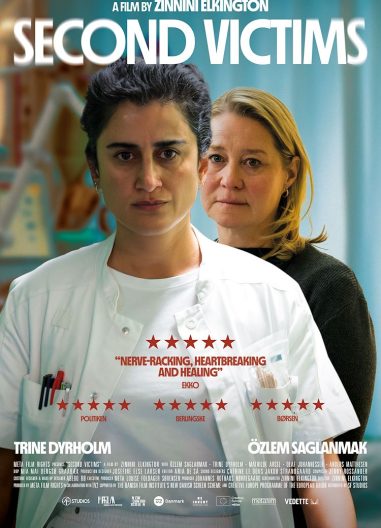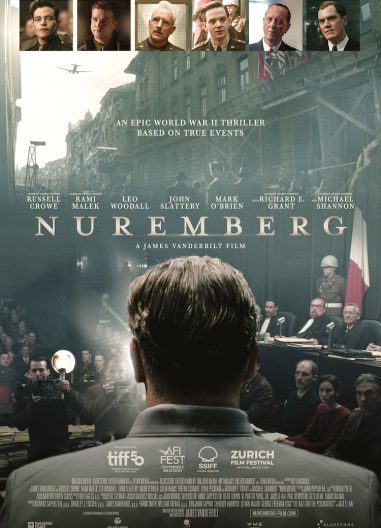Poetry of Space
City of Poets 21′
Sara Rajaei
In een imaginaire, semi-utopische stad zijn alle straten vernoemd naar dichters. Wanneer de oorlog uitbreekt worden de straatnamen veranderd naar die van omgekomen oorlogshelden. Dromen, de verbeelding en herinneringen van de bewoners worden langzaam uitgewist. In City of Poets maakt regisseur Sara Rajaei een sprookje met behulp van persoonlijk film- en fotomateriaal. De film is een krachtige metafoor voor de ervaring van oorlogsvluchtelingen. Een veranderlijke orale geschiedenis is het enige wat hen resteert.
All streets are named after poets in an imaginary, semi-utopian city. When war breaks out, the street names are changed to those of fallen war heroes. Dreams, imagination and memories of the residents are slowly erased. In City of Poets, director Sara Rajaei creates a fairy tale with the help of personal film and photographic material. The film is a powerful metaphor for the experience of war refugees. A changing oral history is all they are left with.
Msaytbeh, the elevated place 20′
Rawane nassif
Msaytbeth in Beiroet was van oudsher een linkse en diverse wijk waar iedereen bij elkaar over de drempel kwam. Na twintig jaar afwezigheid keert regisseur Rawane Nassif terug naar haar ouderlijk huis. Met beelden gefilmd vanaf de 18e verdieping geeft ze een persoonlijke kijk op de buurt waar zij opgroeide. Ze laat zien hoe de buurt door oorlog, toenemende huurprijzen en sektarisme voor altijd veranderd is.
Msaytbeh in Beirut was traditionally a leftist and varied neighbourhood where people were in and out one another’s homes all the time. Director Rawane Nassif returns to her parental home after an absence of twenty years. With images filmed from the 18th floor, she offers a personal look at the neighbourhood where she grew up. She shows how it changed as a result of war, rising rent prices and sectarianism.
Moi Aussi, Je Regarde 22′
Ingel Vaikla
Sfeervolle impressie van Le Corbusiers Unité d’Habitation in Marseille door de ogen van een groep jonge vrouwen. De mannelijke blik stond eeuwenlang centraal in zowel films als architectuur. Met een centrale rol voor een masculien rolmodel, de modulor, is de Unité d’Habitation is daar misschien wel het beste voorbeeld van. Met Moi aussi, je regarde draait regisseur Ingel Vaikla de blik terug. In haar film laat zij op poëtische wijze zien hoe vrouwen het gebouw eigen maken.
Atmospheric impression of Le Corbusier’s Unité d’Habitation in Marseille through the eyes of a group of young women. For centuries, the male gaze shaped both film and architecture. Perhaps the best illustration of that is the Unité d’Habitation, where a masculine role model, the Modulor, plays a central role. Director Ingel Vaikla reverses the gaze in Moi Aussi, Je Regarde. In her film she sensitively shows how women make the building their own.
Where I live 11′
Susi Jirkuff
Wat als je merkt dat je appartement telkens één verdieping lager komt te liggen? Where I live vertelt een absurdistisch verhaal over een vrouw die merkt dat haar appartement steeds verder zakt. De verteller verklaart hoe haar zinkende flat opvallend veel parallellen heeft met haar eigen neerwaardse spiraal. Regisseur Susi Jirkuff maakte een eigenzinnige korte animatiefilm in ruwe houtskooltekeningen die haar psychische landschap stemmig vormgeven. Langzaam maar zeker krijgen alle oppervlakken van haar flat een eigen leven. Hoe ver kun je eigenlijk zinken?
What if you notice that your apartment is always moving one floor lower? Where I Live tells an absurdist story about a woman who notices that her apartment is sinking further and further. The narrator explains how her sinking apartment has striking parallels with her own downward spiral. Director Susi Jirkuff made a idiosyncratic short animated film in rough charcoal drawings that give shape to her psychological landscape. Slowly but surely, all surfaces of her apartment take on a life of their own. How far can you actually sink?
Kies tijdstip
- filmspecial
City of Poets 21′
Sara Rajaei
In een imaginaire, semi-utopische stad zijn alle straten vernoemd naar dichters. Wanneer de oorlog uitbreekt worden de straatnamen veranderd naar die van omgekomen oorlogshelden. Dromen, de verbeelding en herinneringen van de bewoners worden langzaam uitgewist. In City of Poets maakt regisseur Sara Rajaei een sprookje met behulp van persoonlijk film- en fotomateriaal. De film is een krachtige metafoor voor de ervaring van oorlogsvluchtelingen. Een veranderlijke orale geschiedenis is het enige wat hen resteert.
All streets are named after poets in an imaginary, semi-utopian city. When war breaks out, the street names are changed to those of fallen war heroes. Dreams, imagination and memories of the residents are slowly erased. In City of Poets, director Sara Rajaei creates a fairy tale with the help of personal film and photographic material. The film is a powerful metaphor for the experience of war refugees. A changing oral history is all they are left with.
Msaytbeh, the elevated place 20′
Rawane nassif
Msaytbeth in Beiroet was van oudsher een linkse en diverse wijk waar iedereen bij elkaar over de drempel kwam. Na twintig jaar afwezigheid keert regisseur Rawane Nassif terug naar haar ouderlijk huis. Met beelden gefilmd vanaf de 18e verdieping geeft ze een persoonlijke kijk op de buurt waar zij opgroeide. Ze laat zien hoe de buurt door oorlog, toenemende huurprijzen en sektarisme voor altijd veranderd is.
Msaytbeh in Beirut was traditionally a leftist and varied neighbourhood where people were in and out one another’s homes all the time. Director Rawane Nassif returns to her parental home after an absence of twenty years. With images filmed from the 18th floor, she offers a personal look at the neighbourhood where she grew up. She shows how it changed as a result of war, rising rent prices and sectarianism.
Moi Aussi, Je Regarde 22′
Ingel Vaikla
Sfeervolle impressie van Le Corbusiers Unité d’Habitation in Marseille door de ogen van een groep jonge vrouwen. De mannelijke blik stond eeuwenlang centraal in zowel films als architectuur. Met een centrale rol voor een masculien rolmodel, de modulor, is de Unité d’Habitation is daar misschien wel het beste voorbeeld van. Met Moi aussi, je regarde draait regisseur Ingel Vaikla de blik terug. In haar film laat zij op poëtische wijze zien hoe vrouwen het gebouw eigen maken.
Atmospheric impression of Le Corbusier’s Unité d’Habitation in Marseille through the eyes of a group of young women. For centuries, the male gaze shaped both film and architecture. Perhaps the best illustration of that is the Unité d’Habitation, where a masculine role model, the Modulor, plays a central role. Director Ingel Vaikla reverses the gaze in Moi Aussi, Je Regarde. In her film she sensitively shows how women make the building their own.
Where I live 11′
Susi Jirkuff
Wat als je merkt dat je appartement telkens één verdieping lager komt te liggen? Where I live vertelt een absurdistisch verhaal over een vrouw die merkt dat haar appartement steeds verder zakt. De verteller verklaart hoe haar zinkende flat opvallend veel parallellen heeft met haar eigen neerwaardse spiraal. Regisseur Susi Jirkuff maakte een eigenzinnige korte animatiefilm in ruwe houtskooltekeningen die haar psychische landschap stemmig vormgeven. Langzaam maar zeker krijgen alle oppervlakken van haar flat een eigen leven. Hoe ver kun je eigenlijk zinken?
What if you notice that your apartment is always moving one floor lower? Where I Live tells an absurdist story about a woman who notices that her apartment is sinking further and further. The narrator explains how her sinking apartment has striking parallels with her own downward spiral. Director Susi Jirkuff made a idiosyncratic short animated film in rough charcoal drawings that give shape to her psychological landscape. Slowly but surely, all surfaces of her apartment take on a life of their own. How far can you actually sink?


















